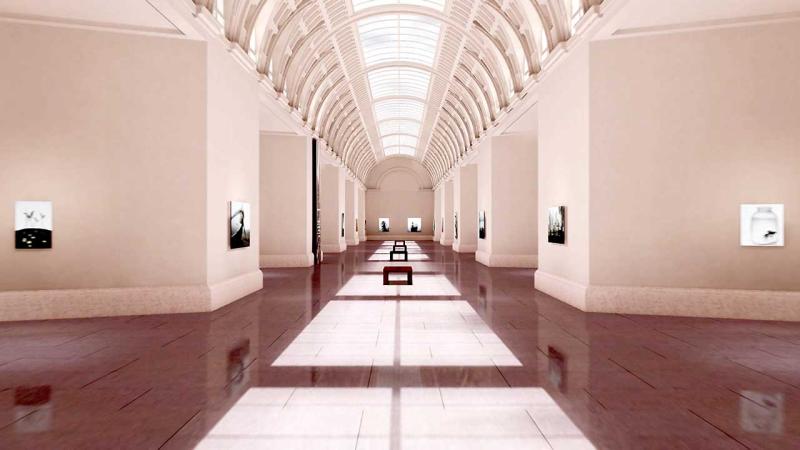The Vilbil Blog
The Benefits of the Digital Museum Format
For centuries, museums have preserved and presented cultural treasures, shaping how we experience history, art, and identity. Yet the traditional format, as valuable as it is, comes with unavoidable constraints: limited space, fragile objects, geographical distance, and social or financial barriers.
Today, the emergence of high-performance servers and interactive streaming offers a way forward. Digital museums are no longer experiments or novelties. They are becoming powerful cultural platforms in their own right — not replacements for physical museums, but complements that expand what museums can be.
Here are some of the most significant advantages of the digital museum format:
1. Uncompromising visual accuracy
In physical galleries, art often comes with distance: a velvet rope, a sheet of glass, or a crowded room that keeps you a few steps too far. Digital museums remove those barriers. Thanks to advanced rendering, every brushstroke, crack, and reflection can be reproduced faithfully. Visitors can zoom in closer than ever before — sometimes closer than the human eye would allow in person.
2. Time on your terms
A museum visit is usually a negotiation with time: queues at the entrance, a timed ticket, the pressure of moving along as others wait. In digital spaces, those limits vanish. You can spend an hour with a single painting, or return to it day after day. The experience is no longer hurried; it unfolds at the visitor’s pace.
3. Hidden treasures revealed
Most museums can display only a fraction of their collections. The rest remains in storage, unseen for decades. In digital museums, space is unlimited. Forgotten works, fragile pieces, and rarely exhibited treasures can finally be shared with audiences worldwide — without risk to the originals.
4. A home for contemporary media
Kinetic sculptures, video installations, sound-based works, and interactive pieces are notoriously difficult to present in traditional galleries. Digital environments offer a natural stage for such complexity. Multimedia works can be experienced as intended, without compromise.
5. True inclusivity
Physical barriers — from steep staircases to ticket prices — too often exclude people from cultural spaces. Digital museums offer unprecedented accessibility. Anyone with an internet connection, regardless of physical ability or financial means, can engage with collections that once felt distant or inaccessible.
6. Unlimited reach
A museum in Paris or New York can be shared instantly with someone in Nairobi, Buenos Aires, or a small town far from any cultural center. Distance, logistics, and borders become irrelevant. The museum is not confined by geography; it becomes global by design.
7. Culture without constraints
In times of political tension, travel restrictions, or even closed borders, cultural exchange often suffers. But digital museums remain open, offering continuity where physical institutions cannot. They preserve not only artworks, but also the idea of culture as a shared, borderless experience.
8. Engaging younger audiences
Teenagers and young adults — often the hardest demographic to attract to physical museums — feel immediately at home in digital environments. Interactivity, immersion, and familiarity with digital tools can spark curiosity where traditional formats sometimes fail. The digital museum is not a substitute for school trips; it is a way to make culture feel native to a generation raised online.
Beyond preservation: a new cultural paradigm
The digital museum format is not simply about solving problems. It represents a broader transformation in how we engage with culture. By removing barriers of time, distance, cost, and access, digital museums invite more people into the conversation. They expand not just audiences, but possibilities: what we choose to display, how we experience it, and how we connect through it.
In this sense, the future of museums is not a choice between physical and digital. It is a dialogue between the two — a partnership in which each strengthens the other. The physical museum grounds us in place and presence; the digital museum extends those walls into a limitless, inclusive, and global space.
A living example: The Vilbil
One project beginning to explore this potential is The Vilbil — a new digital hub for artists and audiences that seeks to combine accessibility with immersion. Built around the principles of interactive streaming, it allows visitors to step into curated virtual galleries through nothing more than a web browser.
The Vilbil reflects many of the advantages outlined above:
-
It creates a space where art can be explored in detail and at leisure, without the limits of physical galleries.
-
It enables inclusivity and accessibility, ensuring that audiences with different abilities or limited resources are not excluded.
-
It connects people globally, fostering cultural dialogue without borders or restrictions.
The Vilbil demonstrates how digital museums can move beyond theory and into practice. It is not about replacing the museum experience, but about extending it — offering new ways to engage, new audiences to reach, and new opportunities for artists to be seen.
The lesson is clear: when technology is designed to serve culture, the museum becomes not smaller, but larger — not confined, but shared.
